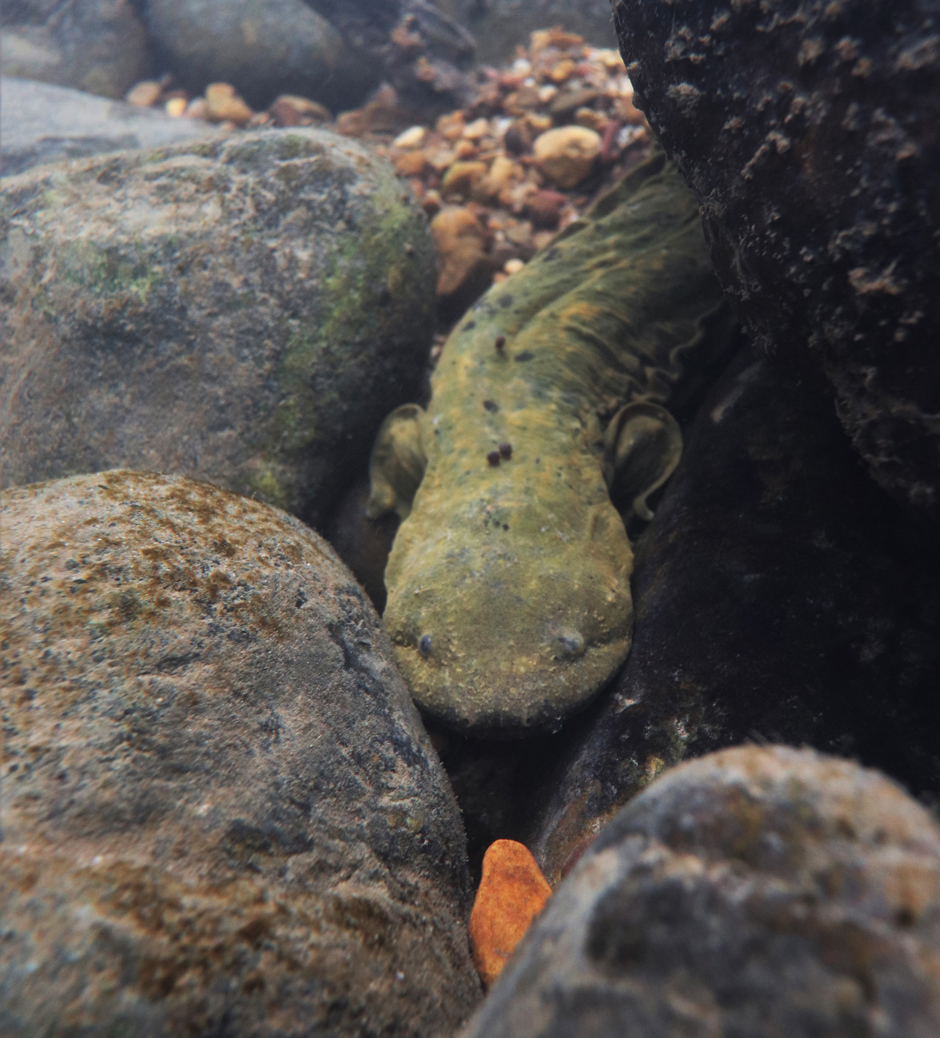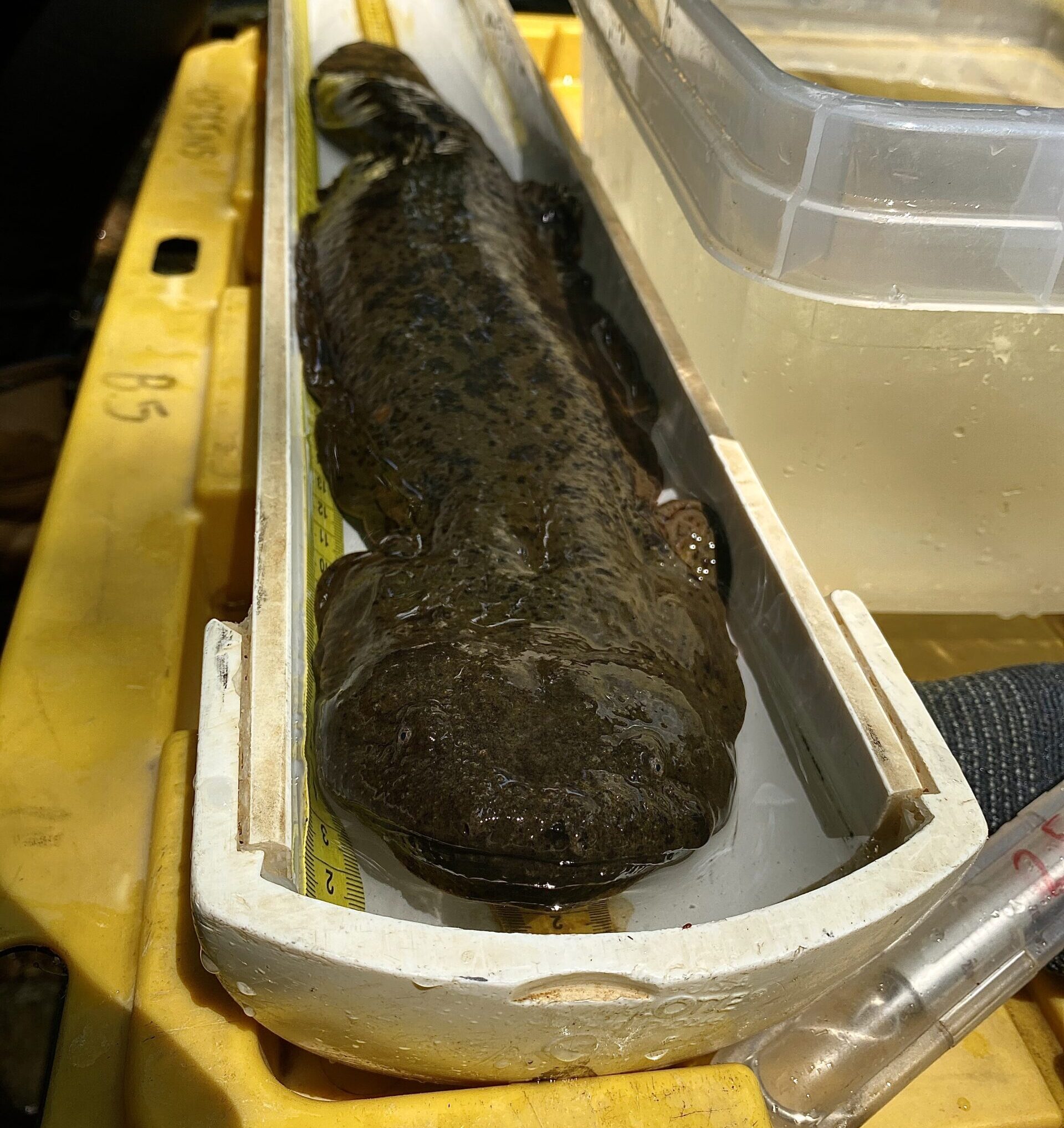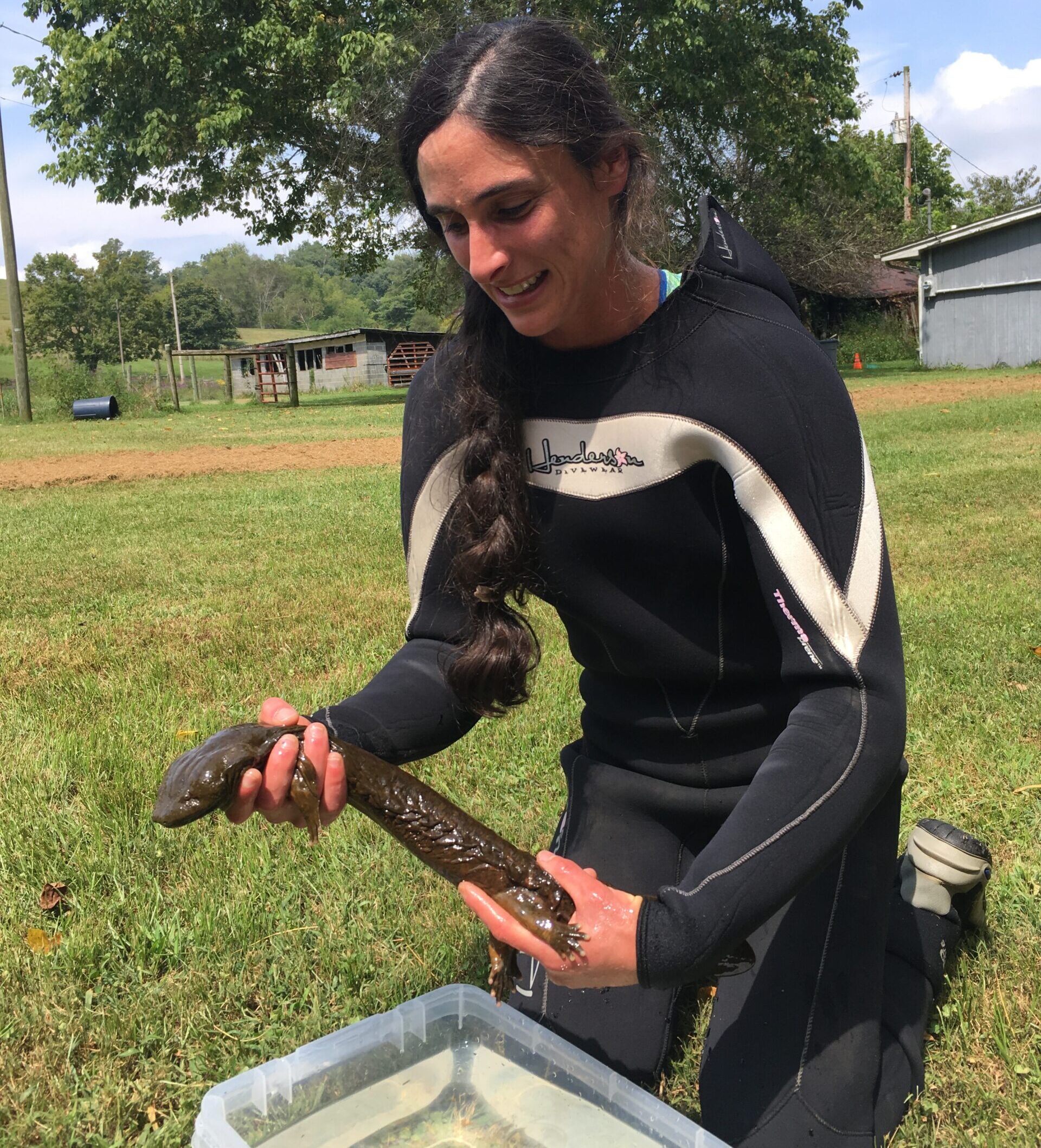The Eastern Hellbender: North America’s Largest Salamander May Be In Trouble
 Eastern Hellbender in its natural habitat (Credit: Jordy Groffen)
Eastern Hellbender in its natural habitat (Credit: Jordy Groffen)The Eastern Hellbender is a fully aquatic salamander species that inhabits the rivers and streams of the Appalachian region of the U.S. It is the largest salamander in North America, with an average length of 12-20 inches–however, they can grow up to 30 inches and weigh as much as 4 pounds. Eastern Hellbenders are identifiable by their large, flattened head and small but widely separated eyes. They are often brown in color but can be gray, yellowish brown and even black.
Rebecca O’Brien, a Ph.D. candidate at Virginia Tech, did not originally plan on studying these amphibians for her doctorate. “I just saw this listing when I was looking for graduate positions. And I didn’t know much about Hellbenders at the time so I started looking into it. Evolutionarily, they’re a really unique species,” she explains. O’Brien learned that Eastern Hellbenders display unusual parental care behavior, which inspired her to learn more about this distinctive species.
Observing Hellbender Parental Care
Hellbenders are difficult to study during their reproductive season because they spend most of their time underwater and nestled under large rocks at the bottom of rivers and streams. What is known, however, is that male hellbenders will stake out and create nests under these large rocks. Afterward, females will lay eggs, and the males will fertilize the eggs and stay with them until the following spring, according to the Virginia Department of Wildlife Resources.
To get around the challenge of observing hellbenders during their mating cycle, O’Brien and her colleagues have been using artificial habitats to observe these amphibians in an environment that attempts to replicate their natural nests. “It’s a square chamber with a long tunnel coming off one corner. So they have this easily defendable space where they can hang out,” O’Brien describes. “What I was working on was taking one of those shelters and making it much taller, and then putting a camera in the roof so that we could film the behaviors going on.” Although she initially worried that the hellbenders wouldn’t like their new, larger dens, they responded well, and this allowed O’Brien to observe them like never before.

A PVC pipe with a measuring tape glued inside is used to measure the length of each animal. (Credit: Rebecca O’Brien)
Does Water Quality Impact Eastern Hellbender Egg Health?
O’Brien is observing eastern hellbenders during their reproductive cycles to understand how changes in water quality are influencing parental care behavior. According to O’Brien, one of the biggest threats to hellbenders is their declining recruitment, with parental care being vital to the recruitment of young hellbenders.
As water temperature rises, dissolved oxygen levels in that system decline, and because hellbender eggs rely on diffusion for their oxygen, this could cause problems for the eggs. O’Brien is interested in how male parental care behaviors influence this process.
“Hellbender dads have the potential to either compensate for the declining dissolved oxygen through their parental care behaviors. or to not do anything,” O’Brien explains. “Maybe as dissolved oxygen levels get lower, they spend so much time taking care of themselves that they spend less time taking care of their eggs.”
O’Brien described how eastern hellbender males are known to move their tails in a fanning motion to help buffer eggs against hypoxic conditions. However, it is possible that conditions become bad enough that the males may instead revert to behavior that pushes fresh water across their own skin, creating a positive feedback loop that will only provide less oxygen to the eggs.
Eastern Hellbender Population Concerns
Although the explanation for less recruitment is still not certain, eastern hellbenders are still suffering. The eastern hellbender is listed as endangered in some states, such as Missouri, Ohio, and Alabama. With the difficulty that comes with studying eastern hellbenders in the wild, they are not yet listed as endangered in all states where their populations are thought to be declining, according to the New York Department of Environmental Conservation.
Along with low dissolved oxygen levels, another issue facing hellbenders in regard to water quality is siltation. “Hellbender larvae depend on these really small spaces in between the gravel and small rocks on the bottom of the creek,” says O’Brien. “So if you get a bunch of silt that comes in and fills in all those little spots, there’s nowhere for them to go.”
Clearing riparian zones along creeks and rivers can be a cause of both of these issues. O’Brien explains that the erosion caused by less vegetation can lead to increasing amounts of sediment entering the water from stormwater runoff. Moreover, reducing the amount of shade a creek receives only perpetuates rises in water temperature and a decline of dissolved oxygen.
“If you get enough siltation, even the big crevices that the adults depend on can get filled in, and then they don’t have anywhere to hide,” O’Brien explained, also adding, “These guys are so big, that they need high oxygen concentrations in their streams to survive.”

The animals are brought to the bank to measure their size and assess their health three times during the breeding season. (Credit: Jordy Groffen)
Implementing Discoveries
O’Brien believes that the public plays a large role in helping to drive progress in ecological conservation. Land managers, companies and everyday people can play a key role in the connection between scientific discovery and the implementation of that work in the real world.
“It’s a lot of learning what people value and tapping into their local norms and learning either how to work within those norms to shift people’s approaches towards how they manage their property or to figure out ways to shift those norms,” says O’Brien. “Working on private lands enable more conservation work, but it’s hard.”
Conclusion
The declining population of eastern hellbenders offers insight into how declining water quality can have a severe effect on the populations of river-dwelling species. Small changes in aquatic ecosystems can have cascading effects, but work across the country is being done to monitor and improve water quality for the benefit of all the humans, plants and animals that need it to survive.
Despite the challenges facing conservation efforts, O’Brien remains optimistic about the future, “I think it’s so important to pay attention to the success stories that are out there. Because they are out there. Everywhere.”




0 comments